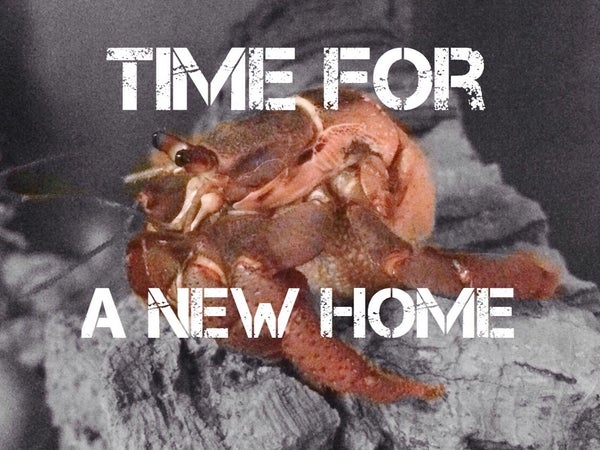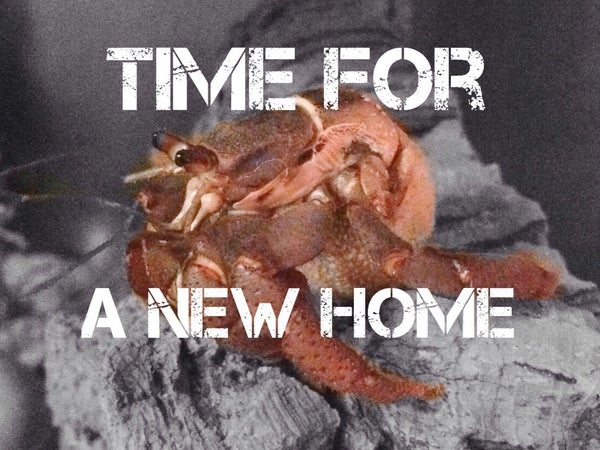This article was published in Scientific American’s former blog network and reflects the views of the author, not necessarily those of Scientific American

For the past 5.5 years, the merry Symbiartic crew — Kalliopi, Katie, and Glendon — have featured hundreds of artists, held community events, and advocated for the respect of art and artists in science. But internet landscapes change, and today is our last post on the Scientific American blog network. We’re not going away, though. (You can’t get rid of us that easily.)
On supporting science journalism
If you're enjoying this article, consider supporting our award-winning journalism by subscribing. By purchasing a subscription you are helping to ensure the future of impactful stories about the discoveries and ideas shaping our world today.
Six years ago, sciart blogs were not an integral part of the wider science communication network. They were a community adjacent. When Glendon Mellow was asked to be one of the network’s founding bloggers and suggest a co-blogger, Kalliopi Monoyios was his first pick: Kalliopi always shared stories Glendon hadn't seen or heard of. Later, when the network wranglers wanted to expand our beat and add a comic artist to the mix, Kalliopi and Glendon asked Katie McKissick to join based on her experience creating the popular cartoon Beatrice the Biologist. With Katie, our team was complete: a fine artist, a scientific illustrator, and a web comic artist.
So what exactly did we accomplish here at Symbiartic in our 5+ years? A few highlights:
We’ve written over 400 posts and featured hundreds of artists.
Each September we held our SciArt Blitz where we featured a different piece of sciart each day for the entire month. Archives exist for 2012 | 2013 | 2014
After launching the first SciArt Tweet Storm in 2015, (our community event on Twitter to raise the profile of sciart), this year’s Storm saw over 39 million timeline deliveries, and over 21,000 tweets generated.
We were credited by numerous outlets including Forbes, Huffington Post and Nieman Lab with helping pressure Pinterest to make changes to its Terms of Service back in 2012.
Ranted and raved. Mostly raved.
In bringing us on board at the inception of the blog network, Scientific American made a powerful statement about the value of art in science. Behind the scenes, we’ve helped educate and advocate for proper image use, and our fellow network bloggers and editors have supported and respected artists at every turn. Our blog has been valued and valuable, and Glendon, Katie, and Kalliopi are all thankful we’ve been able to work alongside such supportive people.
SciArt isn’t finished on Scientific American. In some ways, it’s just getting started. The three of us will be staying on as freelance image curators, contributing to Scientific American’s Slideshows and Science Images, features our editors feel have been underutilized until now. We may appear on the Observations blog from time to time. SciArt isn’t ending, it’s getting an upgrade.
And Symbiartic, the blog, the team, is getting an upgrade too. We’ll be moving to symbiartic.com and archiving all of our past posts there, as well as announcing some new features that weren’t possible here on the network blog. Symbiartic is growing up and gaining creative freedom.
So as 2016 draws to a close, we'll pack up this space and look forward to seeing you in our new homes. From each of us:

Katie:
I don’t know how I can ever adequately thank my co-bloggers Glendon and Kalliopi for inviting me to the Symbiartic family four years ago. Blogging on this network with these amazing people has been humbling and exciting. And thank you, dear readers, for joining us as we talked about science, art, comics, and how much I dislike Facebook. Don’t think of Symbiartic as being extinct; think about it evolving into a novel organism.

Glendon:
A hearty thank you to all of the intelligent, creative artists who consented to having their work shared on our blog, and spent time speaking with us about their process. Thank you for becoming a community and for having Symbiartic as a part of it. Thank you to all of the science communicators who took us seriously and recognize the need for image creators in scicomm.
Thank you to my wife Michelle for her support while I have been awake early before work or up late painting and writing and emailing and composing to make my contributions to Symbiartic happen.
Thank you I'm particular to the tireless, ever-curious paleoart community for continuing to inspire and put up with me.
Thank you to the Scientific American team, Mike, Curtis, Kerissa, and so many others. Since the beginning, Scientific American has taken issues around image attribution very seriously, with photo editor Monica recently providing bloggers with new permission documentation that the magazine will archive. Years ago, at one of the ScienceOnline conferences I remember repeatedly challenging a couple of session moderators on their tips to get around permission for image use. After it was over, then-editors Robin Lloyd and Philip Yam came over to speak with me about it. Not just to be sure the SciAm was legally in the clear: they wanted to make sure artists felt respected.
I can't thank Kalliopi and Katie enough for always challenging me. Your posts are always a delightful surprise. You two are the best. We’re gonna rock it in our new roles here at Scientific American, and let’s go build something eye-popping at the new symbiartic.com!

Kalliopi:
Hello, change. Always interesting having you around. Just gimme a sec to appreciate this small room we’ve built before we close the doors and move on...
I’m grateful to have had the opportunity to share my passion for art and science these past five years under the banner of Scientific American. Professionally, it honed my thinking, my communication skills, and gave me a sense of place in a community I care deeply about. Personally, it provided continuity and purpose as I navigated the waters of uncertainty and change that comes with leveling-up in mid-life (still working on that, by the way). In exploring and researching others’ sciart, I tapped into a spring of passionate creativity I knew was there, but had only ever dipped my toes into. Immersing myself in it for five years has given me the courage to pursue my own scienceart full-time.
Thanks to SciAm for sharing our conviction that scienceart has immense value and power. Thanks to the editors we’ve worked with who have provided a human voice to the mysterious SciAm headquarters we network bloggers know very little about. Thanks to my stellar co-bloggers, Glendon and Katie, for being intelligent, fun, supportive team-players on this great journey. And thanks to all our readers - I hope we were able to probe worlds you never knew existed. Onward!
Where to find us going forward:
Twitter:
@Symbiartic - the whole crew
@beatricebiology - Katie McKissick
@eyeforscience - Kalliopi Monoyios
@FlyingTrilobite - Glendon Mellow
Instagram:
@katie_the_beatrice - Katie McKissick
@kalliopi.monoyios - Kalliopi Monoyios
@FlyingTrilobite - Glendon Mellow
Websites:
The New Symbiartic.com (up soon!)
Beatrice the Biologist- Katie McKissick
